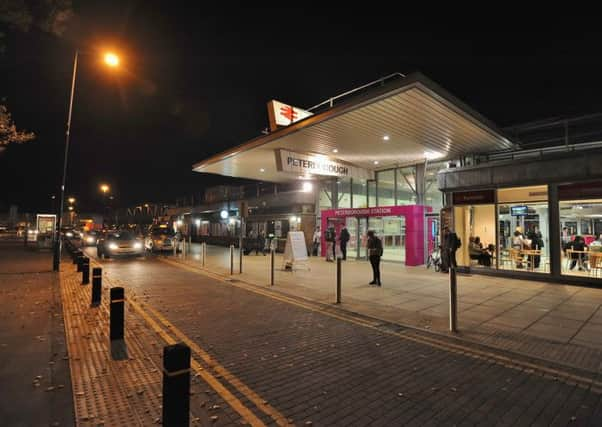Great Northern Rail franchise which runs Peterborough to London services is '˜not value for money'


A report by the National Audit Office (NAO) said that high levels of disruption for passengers meant the Thameslink, Southern and Great Northern rail franchise has not delivered value for money.
Great Northern Rail runs the ‘stopping’ service between Peterborough and London King’s Cross.
Advertisement
Hide AdAdvertisement
Hide AdThe Department for Transport designed the Thameslink, Southern and Great Northern franchise to support the delivery of the major Thameslink upgrade programme and improve passengers’ experience of services.
Today’s report from the NAO finds that between September 2014 and September 2017, passengers on the franchise have experienced the worst service performance on the national rail network. Since Govia Thameslink Railway Ltd started operating the full franchise in July 2015, around 146,000 services (7.7% of planned services) have either been cancelled or have been delayed by over 30 minutes, compared to 2.8% on the rest of the network.
The number of trains arriving at their destination within five minutes of their scheduled arrival time fell to 62% in November-December 2016 during industrial action. Based on data produced by Network Rail and Govia Thameslink about services cancelled, around 56,000 cancellations (38% of the total) were related to the availability of drivers and other train crew. The Department and Govia Thameslink consider that industrial action was the most important cause of train crew shortages. It would have been difficult to foresee industrial action on this scale. Other important causes of delays and cancellations (37%) include the reliability of some train fleets, Network Rail’s management of the rail network, and failures of track and other infrastructure assets such as signalling. Since March 2017, the percentage of trains arriving within five minutes of their scheduled time has exceeded 80%, however this is still below the national average.
The Department accepted Govia Thameslink’s ‘driver only operation’ plan and, recognising it would increase the risk of industrial action, contracted Govia Thameslink’s contingency arrangements. It noted that previous industrial action related to the introduction of ‘driver only operation’ on other rail services, had been limited. The Department did not fully evaluate the possible effects on passengers of different scenarios of industrial action before awarding the contract, nor did it ask Govia Thameslink to do so.
Advertisement
Hide AdAdvertisement
Hide AdThe Department did not seek sufficient assurance that Govia Thameslink would have enough train drivers when it took on the franchise. Govia Thameslink received fewer drivers than it expected from the previous operator of the Thameslink and Great Northern routes, and driver shortages have persisted on Great Northern services. Even if Govia Thameslink had received the number it expected, there would still have been some shortfall.
The Department contracted Govia Thameslink to deliver a specific level of increased services despite concerns from Network Rail and Govia Thameslink that the network could not support the proposed timetables reliably. The Department expected its normal processes for agreeing train services to address these concerns. It is also possible that the demands placed on the network by the December 2015 timetable have contributed to the service disruption which passengers have experienced.
The Department and Network Rail did not have a good understanding of the underlying condition of the existing network at the point when the Department set the requirements of the franchise. Between July 2015 and March 2017, 13% of all cancellations and delays to services of over 30 minutes have been due to failures of track and other Network Rail assets such as signalling systems. In 2016, Network Rail estimated that an investment of up to around £900 million (cash prices) of maintenance and renewal work was needed to achieve the resilience needed to run the new services on the Thameslink network reliably, in addition to infrastructure investments already planned.
The NAO report finds that while the Department has enforced the terms of its contract with Govia Thameslink, and that performance is improving, passengers continue to experience disruption. The Department considered its options for the future of the franchise including terminating the contract, but decided that enforcing the contract was the most appropriate option. The Department and Govia Thameslink agreed a settlement where the operator will fund a £13.4 million spending programme for missing its targets to date. It is unclear how the Department will incentivise Govia Thameslink to deliver good services for passengers in the future, having removed its ability to use financial performance penalties up to September 2018. Negotiations on a second remedial plan, and interim performance measures, are ongoing.
Advertisement
Hide AdAdvertisement
Hide AdThe Department also expects to pay Govia Thameslink for the additional costs, potentially amounting to tens of millions of pounds a year, resulting from changes to the Department’s requirements. The contract changes are needed because the Department has agreed to alter the train services required in the franchise contract, which it had anticipated at the start of the contract, and to reflect delays to the delivery of new trains for Thameslink services